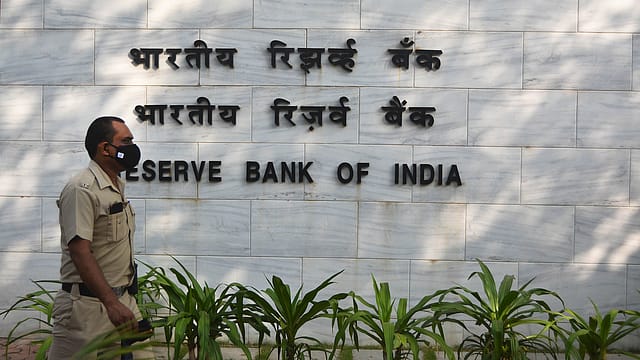Bank NPAs may jump to 4.4% under severe stress: RBI
ADVERTISEMENT

The Reserve Bank of India (RBI) in its Financial Stability Report says that banks' non-performing asset (NPA) ratio may rise to 3.6% and 4.4% if the macroeconomic environment worsens to a medium or a severe stress scenario, respectively.
The gross NPA ratio of all scheduled commercial banks declined to an 11-year low of 3.2% at the end of September 2023.
Under the baseline scenario, the GNPA ratio of all SCBs may improve to 3.1% by September 2024 from the current level of 3.2%, the report shows.
Macro stress tests are performed to assess the resilience of banks' balance sheets to unforeseen shocks emanating from the macroeconomic environment.
At the bank group level, the GNPA ratios of public sector banks (PSBs) may swell from 4.4% in September 2023 to 5.1% in September 2024, whereas it may go up from 2.1% to 3.6% for private banks and from 1.6% to 1.8% for foreign banks under the severe stress scenario, the RBI report says.
With the stock of GNPA coming down, the requirement of provisions also reduced. The write-off to GNPA ratio increased in the first half of 2023-24 mostly due to the reduction in GNPA stock across bank groups.
The sustained reduction in the GNPA stock since March 2018 has been mainly on account of persistent fall in new NPA accretions; write-offs and recoveries; and higher upgradation in the post-pandemic period, the RBI says.
January 2026
Netflix, which has been in India for a decade, has successfully struck a balance between high-class premium content and pricing that attracts a range of customers. Find out how the U.S. streaming giant evolved in India, plus an exclusive interview with CEO Ted Sarandos. Also read about the Best Investments for 2026, and how rising growth and easing inflation will come in handy for finance minister Nirmala Sitharaman as she prepares Budget 2026.
The improvement in lenders' asset quality has been broad-based, the central bank says. The GNPA ratio of the agriculture sector remains high at 7%. At an overall level, asset quality in the personal loans segment has improved, although there has been a marginal impairment in credit card receivables. Within the industrial sector, asset quality improved across all major sub-sectors barring infrastructure and petroleum.
With retail loan growth outpacing borrowings by large borrowers, the share of the latter in gross advances of SCBs has declined further between March 2020 and September 2023. Asset quality in the large borrower portfolio saw significant improvement, which contributed to the lowering of the share of large borrowers in GNPAs of banks. As of September 2023, none of the top 100 borrower accounts remain in the NPA category.
Macro stress tests for credit risk indicate that even under a severe stress scenario, all banks would be able to comply with minimum capital requirements, the banking regulator says.
Stress in the NBFC sector has been assessed to be higher under a high-risk stress scenario relative to the March 2023 position. Contagion risks may warrant monitoring on account of increased inter-bank exposure, the RBI says.
The soundness and resilience of India's banking sector have been underpinned by ongoing improvement in asset quality, enhanced provisioning for bad loans, sustained capital adequacy and rise in profitability, it adds.
